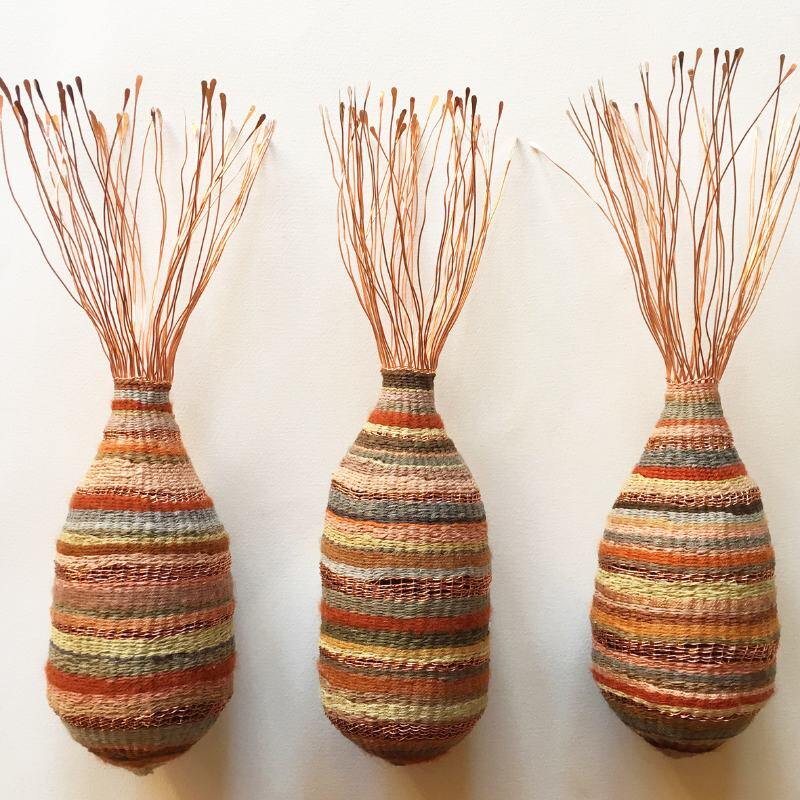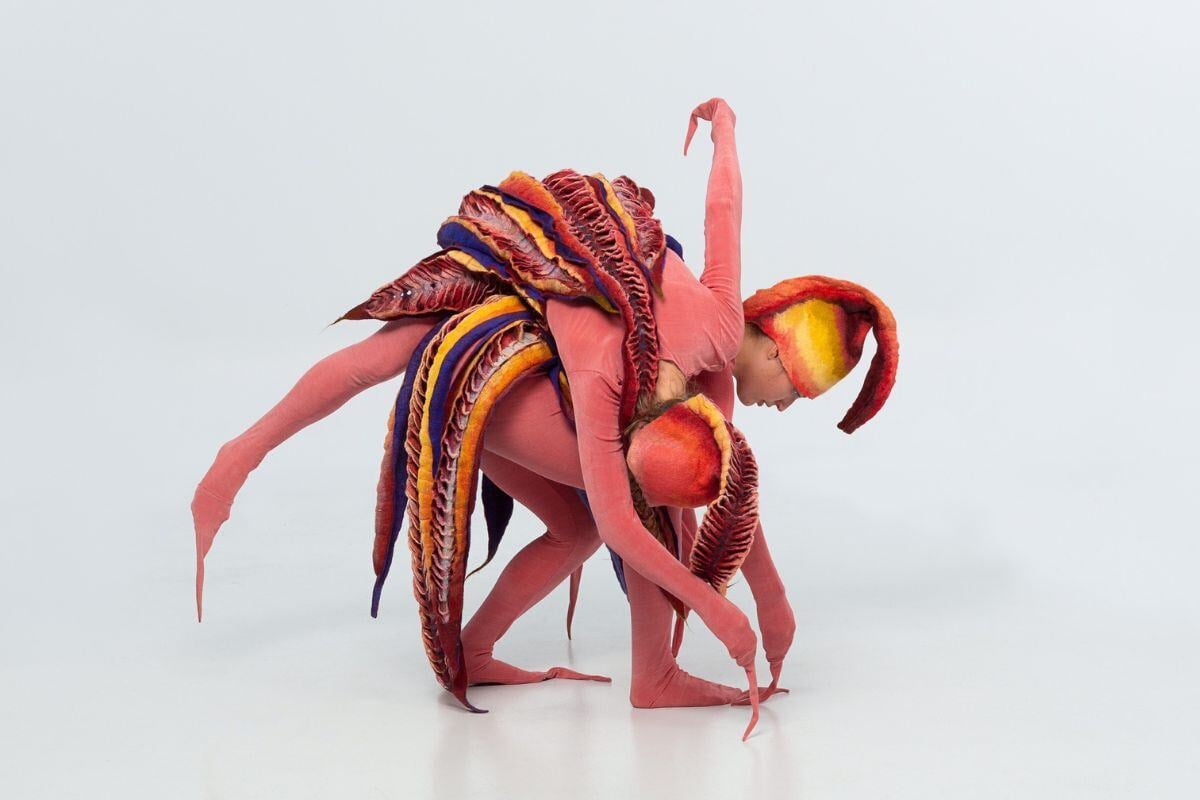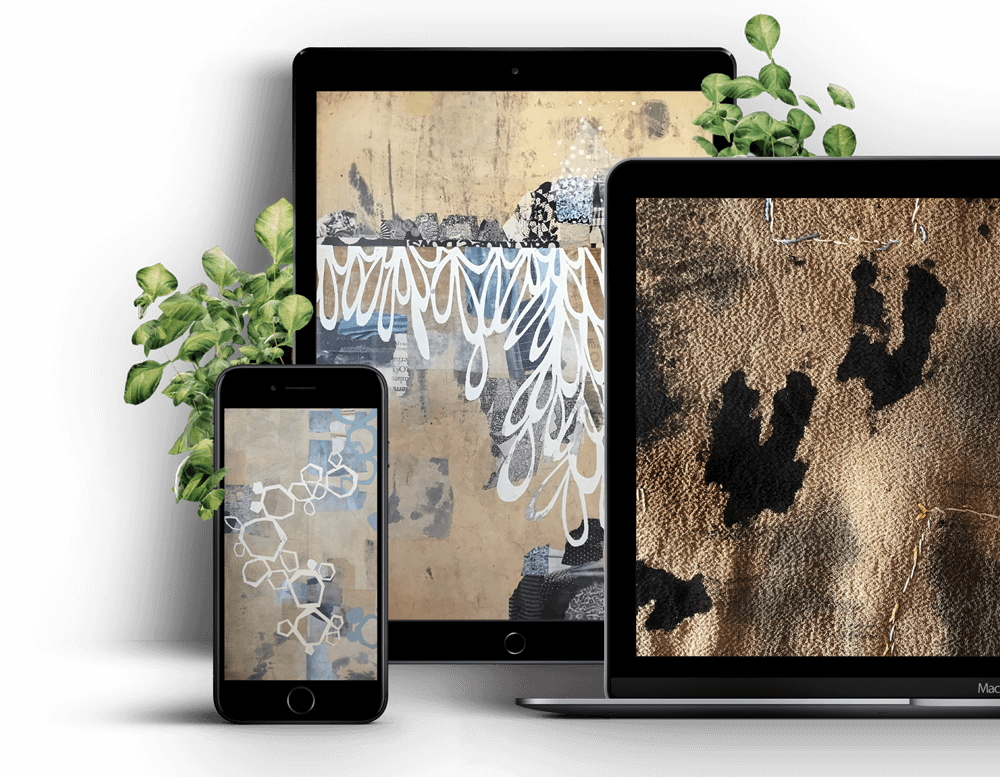Theda Sandiford: Blackity Black Blanket
Theda is a Conceptual Materials Social Practice Artist who transforms everyday objects, like bottle caps, paracord and grocery carts, into profound statements on equity, inclusion and microaggression. She shared her thoughts on her innovative art practice with Fibre Arts Take Two.
Theda Sandiford's Friday Feature Artist Interview can be found at the bottom of this page.
When discovering Theda Sandiford’s artwork for the first time, it’s instantly clear that this is not just any artwork. It catches your eye but also speaks directly to your soul.
Woven from the threads of lived experiences, each fibre tells a story of identity, resilience and transformation, creating a powerful visual narrative that challenges the status quo and invites us into a world where every material, from zip ties to vintage neckties, and even hurricane debris, carries the weight of both personal and collective memory.
Always Making Art
Like so many artists, despite taking time to find art as a full-time practice, Theda always had it in her bones. “I would say I've always made art,” she explains. “Starting from picking up seashells on the beach and stringing them together and making little necklaces or seeing things, picking through garbage and saving little pieces of plastic or yarn and putting those things together. It's always been a part of my life, but maybe I only started to take it seriously as part of my practice, as a way of being, in the last 20, 25 years.
I'm an artist, but it's more. It's not something I do. It's something I am. I think it's a way of looking at the world that makes it art.”
.jpg?width=770&height=514&name=Theda%20Sandiford%20(2).jpg)
Accepting Art
Now, Theda knows she’s an artist through and through. “It took a long time for me to accept that in myself, because my family wanted me to have a real job, something that would be secure, so they were always encouraging me to go to school for something that was more serious, and I did all those things, but I never felt one hundred per cent fulfilled. Even through my professional career working in music, I was enabling other people to realise their dreams, enabling other people's artistry, and there was just something missing. It really wasn't until I started to accept my own artistry and fulfil my own desires that I really could actually claim the mantle of artist.”
Making the Change
Before fully switching to visual arts, Theda was working in the music industry. “I was doing both full-time,” she says, “burning the candle at both ends. I'd be sitting in meetings, knitting and crocheting underneath my desk, or if I was travelling, I would pack a little weaving project or stitch something.
I would have small projects that I would constantly work on, and then when I got home and got into my studio, I would assemble all those pieces. But there came a time where I transitioned full-time, primarily because the ideas of things that I wanted to create with my artwork demanded more of my time, and I was just ready to do it. I just realised I just needed to go for it. And so I did get it. I had a great career, and I loved what I did for a very long time, but it wasn't as much fun anymore. I was having more fun working on my own things.”
Blackity Black Blanket
One of Theda’s most successful and insightful pieces among many was Blackity Black Blanket. “I started working on that zip tie blanket shortly after George Floyd was murdered, and I really wanted to play with zip ties, because zip ties are used by police to subdue people. I wanted to do something with zip ties that would be both hard and soft. And so I started to put the zip ties on a commercial fishing net that I pulled off the beach.
From a distance and up close, when you touch it, it feels like feathers, but of course you can't really sit on it, it pokes you. I just felt compelled to make this blanket and then I sort of threw it to the side onto this chair that was in my studio and the way it draped onto the chair, I was like, ‘Oh, this chaise lounge is meant to be for lounging and relaxing.’ Yet in the face of the zip tie blanket and the zip ties and the microaggressions, if they were all like mini mosquito bites that you were getting over and over and over again, I realised that the metaphor that I was looking for took this item of comfort and relaxation paired with something where you could not realise it would constantly be poking you, that the two belong together, and then that's where this series came from. I've now used over 150,000 zip ties on multiple blankets draped over other sorts of furnishings.”

Microaggression
Microaggression is an integral theme to the bulk of Theda’s work. “There are subtle, oftentimes unintentional ways of being or statements that communicate hostile or racial stereotypes to historically marginalised groups,” she explains. “There'll be things like, ‘You're so articulate,’ where someone's surprised because it assumes that someone of my racial background might not be as articulate as someone else. How we use language often defines where we belong and where we think people belong, or whether they belong or not. They show up in a lot of different ways and oftentimes when they are spoken or actions are taken, it could be someone sees me walking down the street and they grasp their purse because they think I'm going to steal their purse. That's a microaggression.”
Being aware of microaggression is an essential step to becoming a well rounded human being. “We all do it, know you've done it,” says Theda, “Know that you're not a bad person. Now that you know about it, you can be more mindful of your language. Breaking stereotypes and bias comes from actively seeking out people with different experiences of your own and listening. It challenges the biases and the perceptions that you may have.”
%20copy.jpg?width=827&height=517&name=Theda%20Sandiford%20(3)%20copy.jpg) Free Your Mind Installation
Free Your Mind Installation
Creating Installations
Theda says anyone can create installations and get them seen, “I started doing installations in my living room. You can just start in your living room and invite people over and see if they get it. I work in multiples. It's easier to create an installation using similar materials or working in a particular style, all in one given time.
Right now, I'm working on a body of work. It's all recovered marine waste that I pick up after hurricanes. It's hurricane season right now, so after a hurricane, I go to all the beaches and I pick up all the materials so that all the materials are coming from a similar occurrence, or they all kind of have this memory for what they were and now what it's becoming.
I use those commonalities to define the materials that can then expand as I get more. But it could start with just making one piece off of those materials and then making another and another and another.”
Theda’s recommendation for anyone who wants to show installations is to, “Photograph it, film it, film yourself in the environment talking about it. Send that with your submissions and to curators. Once they see it and see you engaging with it, they will understand how the public will engage with it.”
%20copy.jpg?width=869&height=543&name=Theda%20Sandiford%20(2)%20copy.jpg)
About Theda Sandiford
As a Black individual, Theda frequently encountered incidents where people inappropriately touched her hair without consent, reducing her to an object on display. Similarly, Theda has been lauded for being ‘articulate’, a backhanded compliment that implies a presumption of intellectual incompetence among Black people. These seemingly innocuous encounters, while subtle, carry significant weight, leading to stress, anger, frustration, self-doubt, and a profound sense of powerlessness and invisibility.
In her artistic practice, Theda employs a blend of freeform weaving, knotting, and wrapping techniques, drawing upon memories, zip ties, vintage neckties, ribbon, yarn, paracord, rope, bottle caps, recycled fishing nets, and even shopping carts. She seeks to initiate dialogues surrounding implicit bias and stereotypes through repetitive and meditative processes. Theda’s work serves as a medium for vanquishing these disempowering impressions, prompting reflection and introspection on the enduring impact of microaggressions in our society.

Join Our Newsletter
OUR YOUTUBE CHANNEL
View our interviews and more on our Youtube channel!
OUR FACEBOOK GROUP
Join our Community and stay updated with our upcoming announcements!



.jpg)
